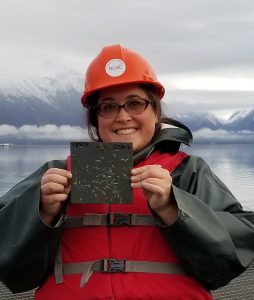By Austin Love
Council Project Manager
Council testing plankton genes to supplement existing processes
The Council funds monitoring for marine species that could be introduced into Prince William Sound as a result of the operation of the Valdez Marine Terminal and associated oil tankers. If an invasive species, such as the European green crab, becomes established in Prince William Sound, they could cause serious economic and ecological harm.

To detect potential invasions early, the Council now uses both visual and genetic methods to monitor for potentially damaging species. The Council recently received the final results of the genetic invasive species monitoring conducted in 2017. The DNA of plankton samples analyzed for an extensive list of marine species including but not limited to crustaceans (crabs), mollusks (clams), and annelids (worms). In 2017, using the genetic plankton analysis technique, Council scientists identified 52 marine species in samples from Port Valdez and central Prince William Sound, and none of those were invasive non-native species. However, 2016 genetic monitoring revealed some non-native species in Prince William Sound, the soft-shell clam (Mya arenaria) and a sea squirt (Botrylloides leachii), but those two species were not found in 2017.
The genetic invasive species monitoring method has several advantages over traditional visual identification. Visual species identification is more labor and time intensive; often requiring expert taxonomists for identification and significant time and manual work collecting field samples from the shoreline, seafloor, and water column. Additionally, the costs of visual monitoring can be higher when factoring in travel costs such as airfare and charter boats and paying for personnel to collect and analyze the samples. In contrast, the genetic method does not require expert taxonomists and collecting and analyzing plankton samples is less expensive and labor intensive, compared to collecting samples from various marine microcosms. Another advantage of genetically analyzing plankton samples is that it can simultaneously detect species that live on the seafloor, water column, or intertidal areas because many species have a planktonic larval stage. However, visual species identification is still needed and is used to complement and fill in knowledge gaps left by genetic invasive species monitoring. For example, visual identification would be needed to determine if an invasive species has established a reproductive adult population in a region.
Detailed results of the Council’s 2017 genetic invasive species monitoring can be found in the report:
Metagenetic Analysis of 2017 Plankton Samples from Prince William Sound, Alaska